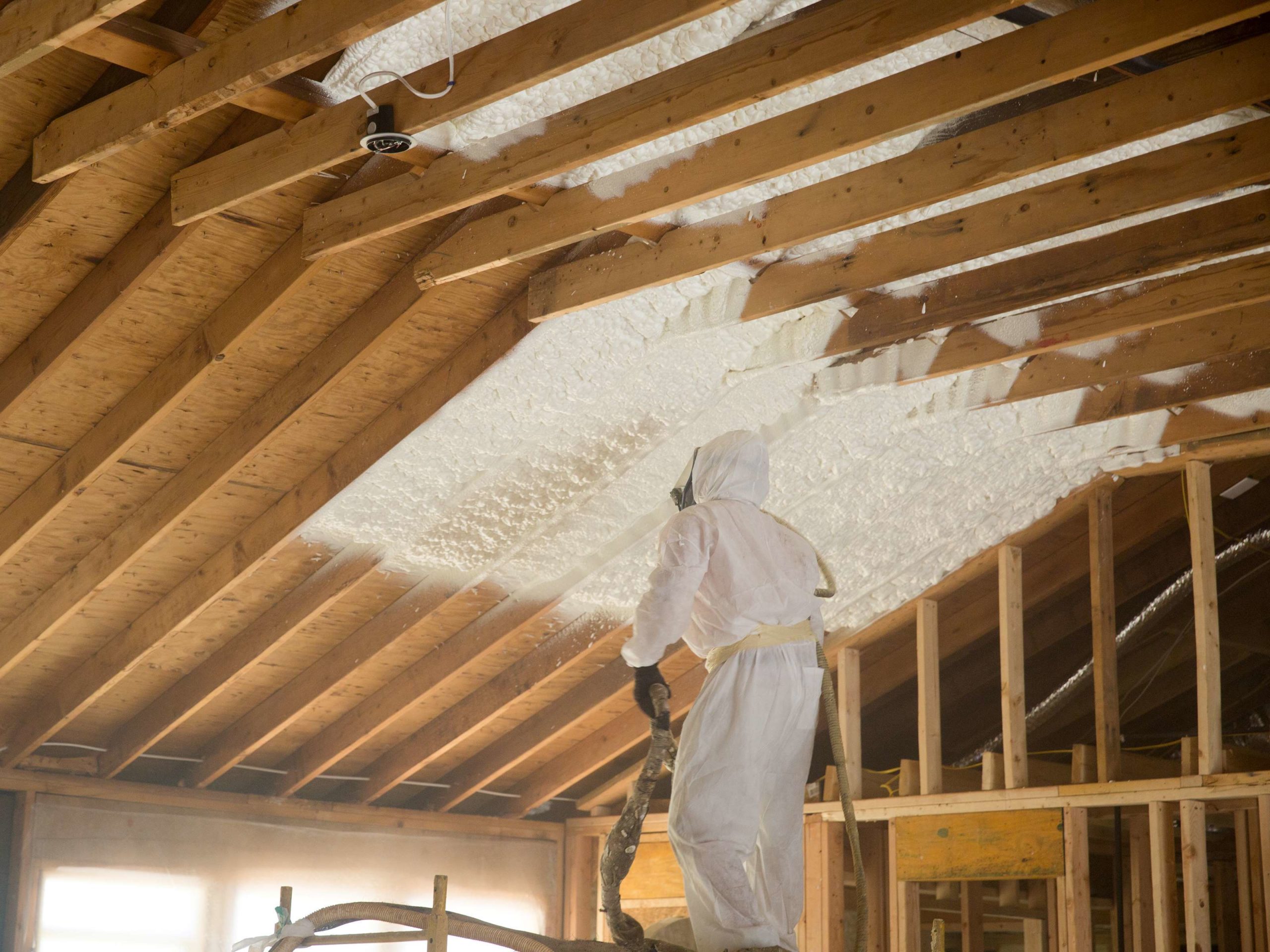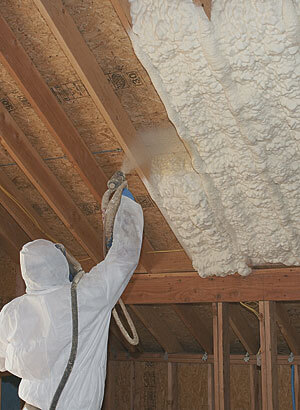Comparing Spray Foam to Typical Insulation: Which Is Better?
Comparing Spray Foam to Typical Insulation: Which Is Better?
Blog Article
Exactly How Spray Foam Can Boost Power Performance in Any Type Of Building
Spray foam insulation has actually become a pivotal solution for enhancing power efficiency across different building types. By producing an airtight seal that lessens air leak, it effectively regulates indoor climates while dramatically lowering home heating and cooling costs. In addition, its remarkable R-value and moisture-resistant residential properties add to lasting energy savings and enhanced building longevity. As homeowner significantly look for lasting remedies, the implications of spray foam insulation extend beyond mere utility financial savings. The full scope of its advantages, however, warrants a closer exam of exactly how it can transform power monitoring techniques in both residential and commercial setups.
Recognizing Spray Foam Insulation
Spray foam insulation is progressively acknowledged for its exceptional thermal performance and flexibility in numerous applications. Made up mostly of polyurethane, this insulation material is used as a liquid that broadens upon contact, filling gaps and creating a seamless obstacle. This one-of-a-kind home enables spray foam to comply with irregular surface areas, making it an excellent selection for both business and property frameworks.

Application of spray foam insulation is normally done by experienced experts making use of specific equipment, ensuring optimal efficiency and safety - Spray Foam. The treating process is quick, enabling for quick setup and marginal disruption. Consequently, spray foam insulation is increasingly being used in new building and construction and retrofitting jobs because of its ability to enhance structural honesty while boosting total power effectiveness in buildings
Benefits of Energy Performance
Power effectiveness plays a crucial duty in reducing operational expenses and minimizing ecological effect across different sectors. By optimizing energy use, property owners and businesses can accomplish considerable cost savings on utility expenses, which directly improves financial efficiency. Effective energy usage indicates much less dependence on nonrenewable fuel sources, thus adding to a reduction in greenhouse gas discharges and promoting an extra lasting setting.
In addition, energy-efficient buildings often experience boosted property worths. As power prices climb and sustainability becomes a top priority for consumers, buildings with improved power efficiency features are more attractive on the marketplace. This fad encourages financial investment in energy-saving innovations, which can additionally drive advancement and financial growth.
Along with ecological and financial benefits, power efficiency can also enhance the total comfort and health and wellness of interior spaces. Correct insulation and efficient home heating and cooling systems aid maintain consistent temperatures, lowering drafts and humidity levels, which subsequently can result in better indoor air top quality.
Inevitably, the advantages of power performance prolong past instant cost savings, fostering a resilient economy, advertising ecological stewardship, and enhancing the lifestyle for owners in any structure.
Exactly How Spray Foam Functions
Normally applied as a liquid, spray foam increases rapidly upon call with surfaces, creating a solid obstacle that successfully seals voids and fractures. This unique home is because of its chemical structure, largely containing isocyanates and polyols, which react when blended to develop a foam that fills up gaps and adheres to various materials, consisting of concrete, timber, and steel.
Once used, the foam expands to several times its initial quantity, making sure a tight seal that stops air leakage. This process significantly reduces thermal linking, which takes place when warmth transfers via materials, bring about power loss. The foam's high R-value, a procedure of thermal resistance, adds to boosted insulation by lessening warmth transfer in between the exterior and interior environments.
Furthermore, spray foam is immune to moisture and bugs, further improving its effectiveness in keeping energy efficiency. Its application can be tailored to different locations, including attics, wall surfaces, and crawl areas, optimizing insulation throughout a building. Spray Foam. Overall, the innovative layout and application approach of spray foam make it an find more information effective option for improving energy efficiency in any kind of structure, resulting in minimized power expenses and a more lasting developed setting

Applications in Numerous Structures
Countless applications of spray foam insulation can be found throughout different building types, improving power performance and convenience. In residential homes, spray foam is commonly used in wall surfaces and attic rooms to produce a smooth barrier versus air leakages, considerably lowering heating and cooling down needs. This application is particularly valuable in older homes, where conventional insulation might be insufficient.
In commercial buildings, spray foam insulation is related to roofing systems and outside wall surfaces, which helps to boost thermal efficiency and secure versus moisture invasion. Its light-weight nature makes it an ideal selection Spray Foam for retrofitting existing frameworks without including substantial weight. Additionally, spray foam can be utilized in industrial setups to shield pipelines and storage space tanks, maintaining temperature level control for sensitive materials.
Institutional buildings, such as healthcare facilities and schools, advantage from spray foam insulation by making certain a constant indoor climate that sustains passenger comfort and wellness. The versatility of spray foam permits it to adjust to various structure shapes and sizes, making it you could try these out a preferred choice for engineers and builders looking for reliable insulation solutions. On the whole, spray foam insulation acts as a vital component in accomplishing energy-efficient buildings across all markets.
Long-Term Price Financial Savings
Spray foam insulation supplies substantial long-term cost financial savings for structure owners and passengers by lowering energy consumption and decreasing energy expenses. By giving a superior air seal, spray foam decreases the infiltration of outdoors air, therefore enhancing the thermal performance of a building. This results in much more effective heating and cooling processes, which can cause considerable decreases in power prices over time.
In enhancement to instant financial savings on energy costs, the toughness and long life of spray foam insulation add to its monetary advantages. Unlike conventional insulation products, which might sag, settle, or deteriorate, spray foam keeps its effectiveness for decades, lowering the requirement for regular replacements or repairs. This long life equates to decrease maintenance costs and much less interruption for passengers.
Furthermore, buildings geared up with spray foam insulation commonly appreciate a rise in residential or commercial property worth, making them more appealing to possible buyers or lessees. As energy efficiency comes to be significantly prioritized, residential properties with reliable insulation options stand out out there. Ultimately, the combination of spray foam insulation not only improves comfort yet also represents a calculated financial investment that yields significant financial benefits over the long term.
Verdict
Finally, spray foam insulation serves as an essential part in enhancing energy efficiency throughout diverse structure types. Its capacity to produce a seamless barrier against air leakage, integrated with moisture-resistant properties and high r-values, substantially minimizes energy intake and associated costs. The execution of spray foam not only adds to consistent interior temperature levels however additionally increases residential or commercial property value, underscoring its function as a sensible investment for both household and industrial homes.
Spray foam insulation has actually arised as a critical service for enhancing energy effectiveness across numerous structure types. Spray Foam. As an outcome, spray foam insulation is progressively being used in new building and retrofitting jobs due to its ability to enhance structural integrity while enhancing general energy effectiveness in buildings
Generally, the innovative design and application technique of spray foam make it an effective solution for boosting power efficiency in any type of framework, leading to lowered power prices and a much more sustainable built environment.
Countless applications of spray foam insulation can be found throughout numerous structure kinds, enhancing power effectiveness and comfort.In verdict, spray foam insulation serves as an important part in enhancing power efficiency across diverse structure kinds.
Report this page